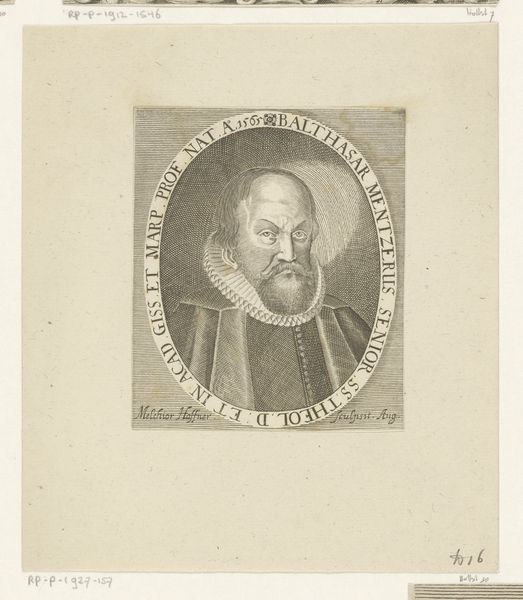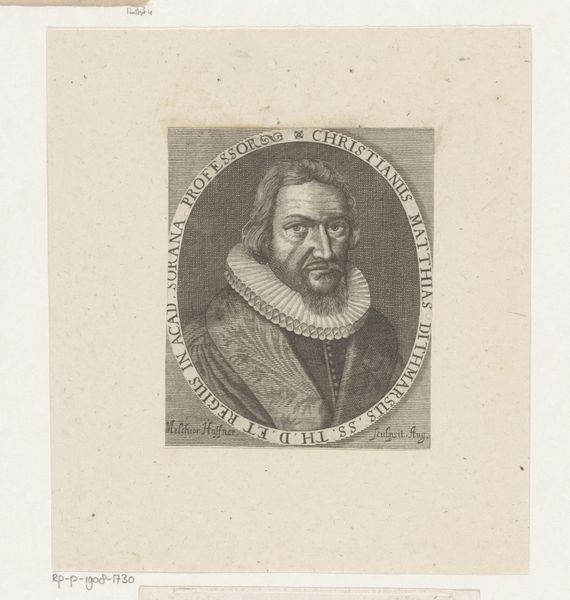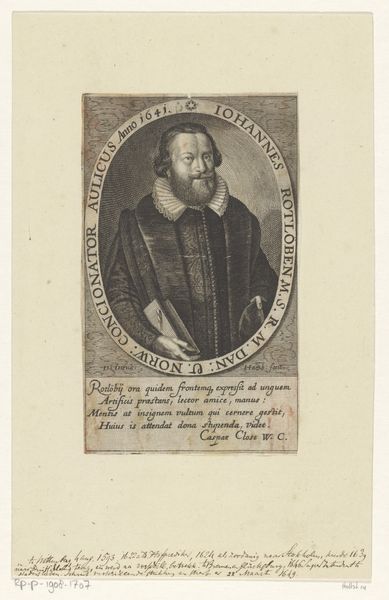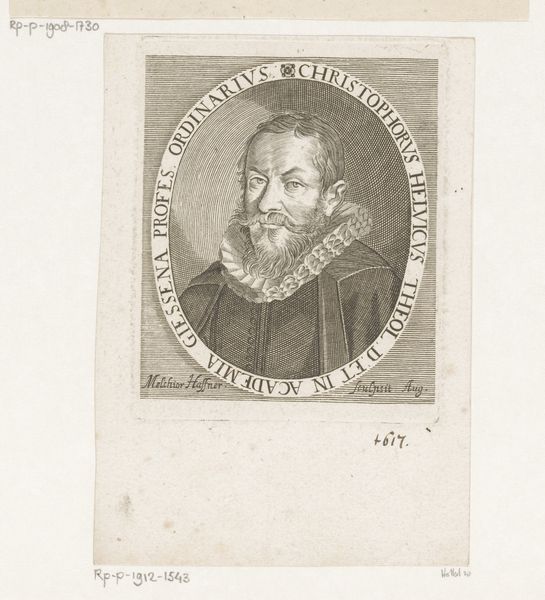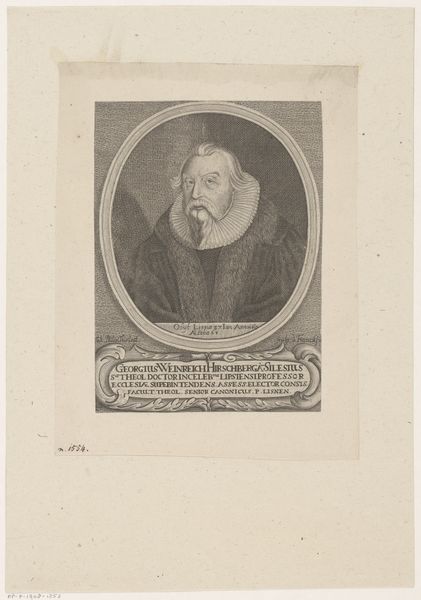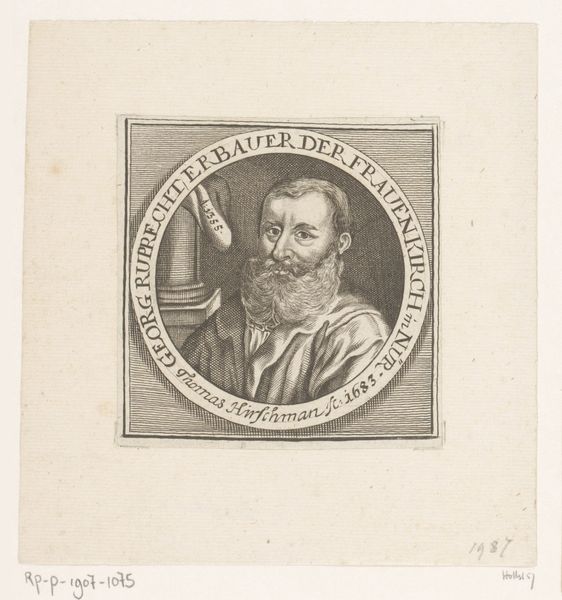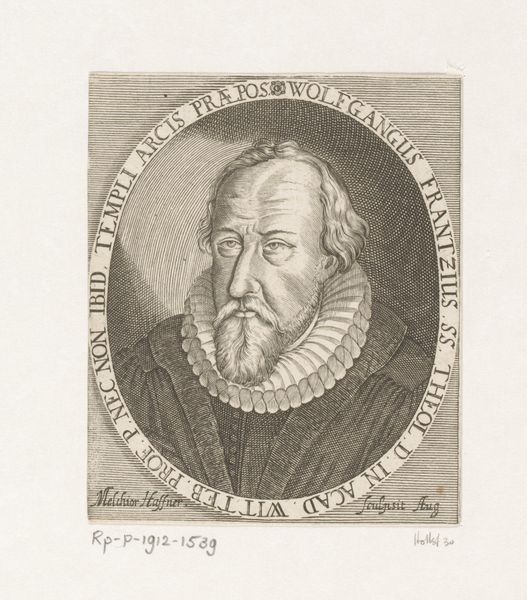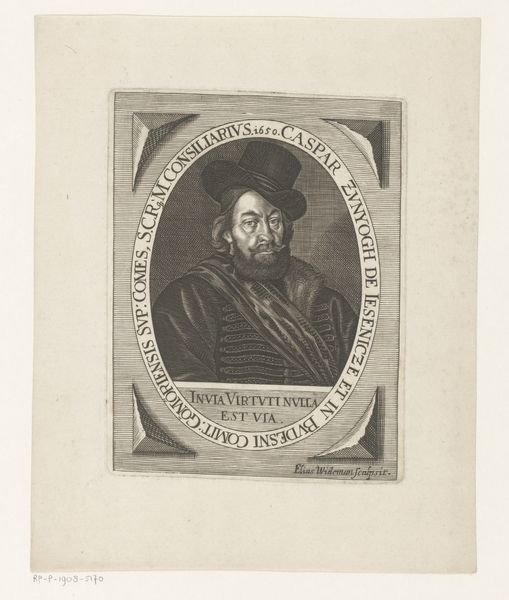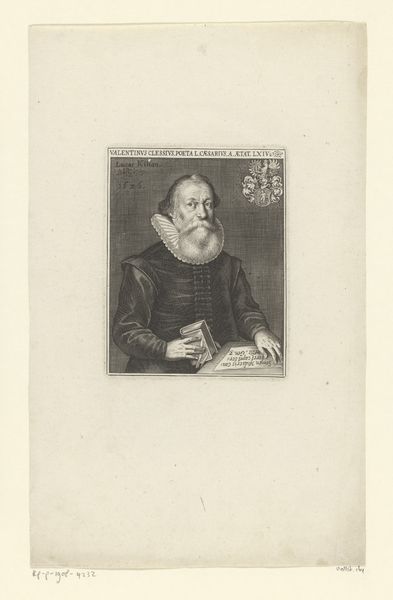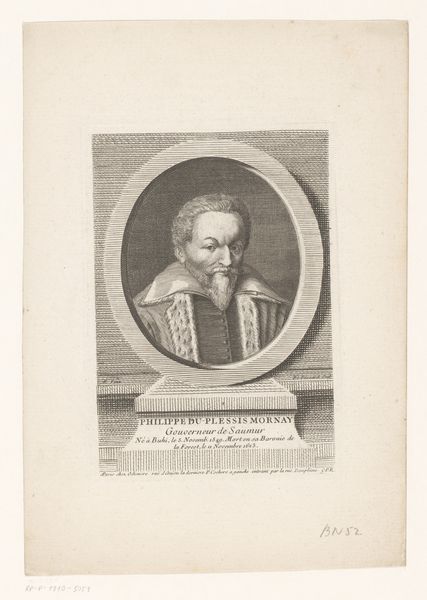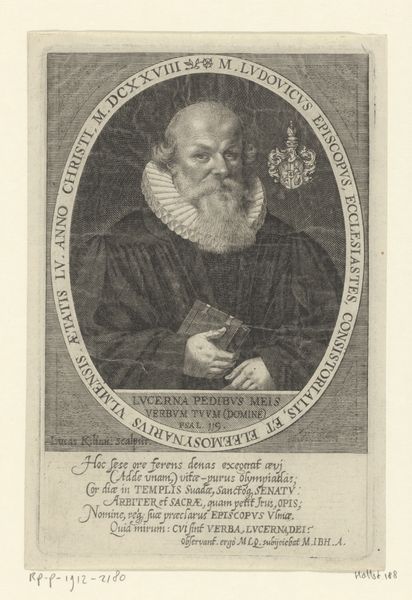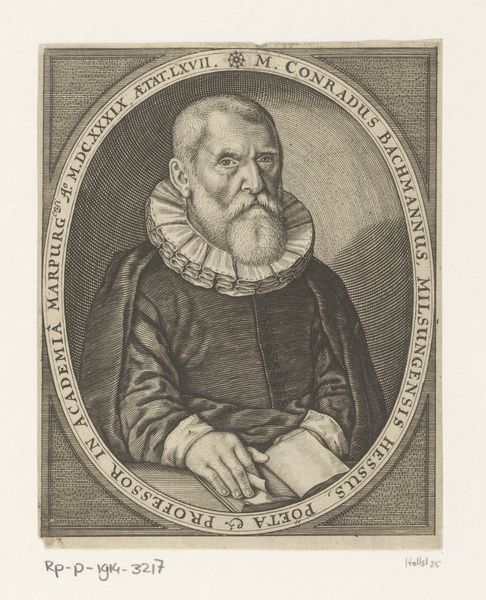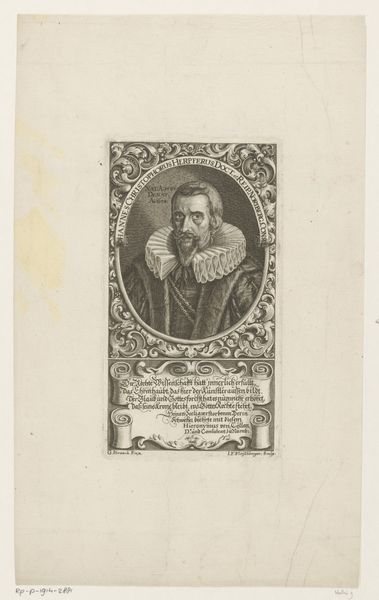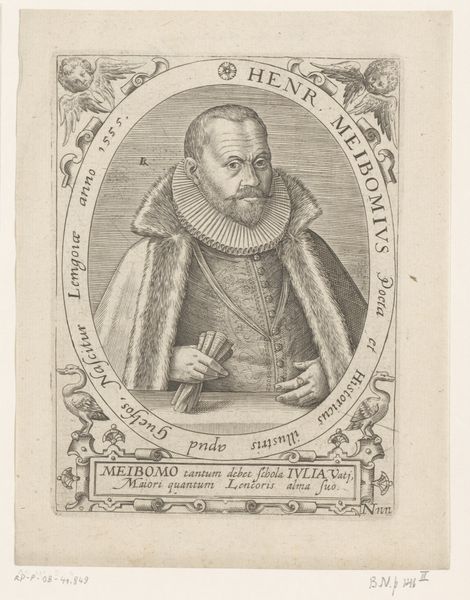
print, engraving
#
portrait
#
baroque
# print
#
old engraving style
#
white palette
#
engraving
Dimensions: height 101 mm, width 87 mm
Copyright: Rijks Museum: Open Domain
Editor: This is a portrait of Jesper Rasmussen Brochmand, an engraving made in 1673 by Melchior Hafner II. The white palette gives a clean and classic look, typical of old engraving styles. What can you tell us about this engraving from an art perspective? Curator: Let's consider first the formal structure. The oval frame immediately establishes a clear boundary, directing the gaze inwards. Within this boundary, we see a masterful employment of hatching and cross-hatching. Note how Hafner utilizes variations in line density and thickness to model the form of Brochmand's face and robes, achieving a remarkable sense of depth and volume within a two-dimensional plane. Editor: That's a great point. I can see how the density of lines really creates form. It’s amazing how detailed it is considering it's just an engraving. What else stands out to you? Curator: The textual inscription encircling Brochmand serves as more than mere identification; it’s an integral compositional element. The even distribution of the text around the oval’s perimeter creates a visual rhythm. Note how the font style influences the overall Baroque aesthetic. The letterforms aren't merely carriers of information; they are visual elements contributing to the work’s ornamental and expressive qualities. Editor: It’s interesting how the inscription is not just information but also adds to the composition. Curator: Exactly! It is also noteworthy that Hafner made an explicit mark and date on the print; not to be confused as mere functional gesture of production or marketing as this introduces a claim to the originality and thus challenges us to reconcile this mark of 'originality' within its status as a print. I wonder what this claim makes us think? Editor: Thinking about this portrait in terms of its formal elements really opens my eyes to all the choices the artist made. Curator: Indeed, close visual analysis helps us uncover the layers of meaning embedded in the artwork's very structure. We observe that an approach that begins from, and consistently centers on the materiality and form allows a richer engagement with the portrait itself, which leads towards the portrait's subject.
Comments
No comments
Be the first to comment and join the conversation on the ultimate creative platform.
